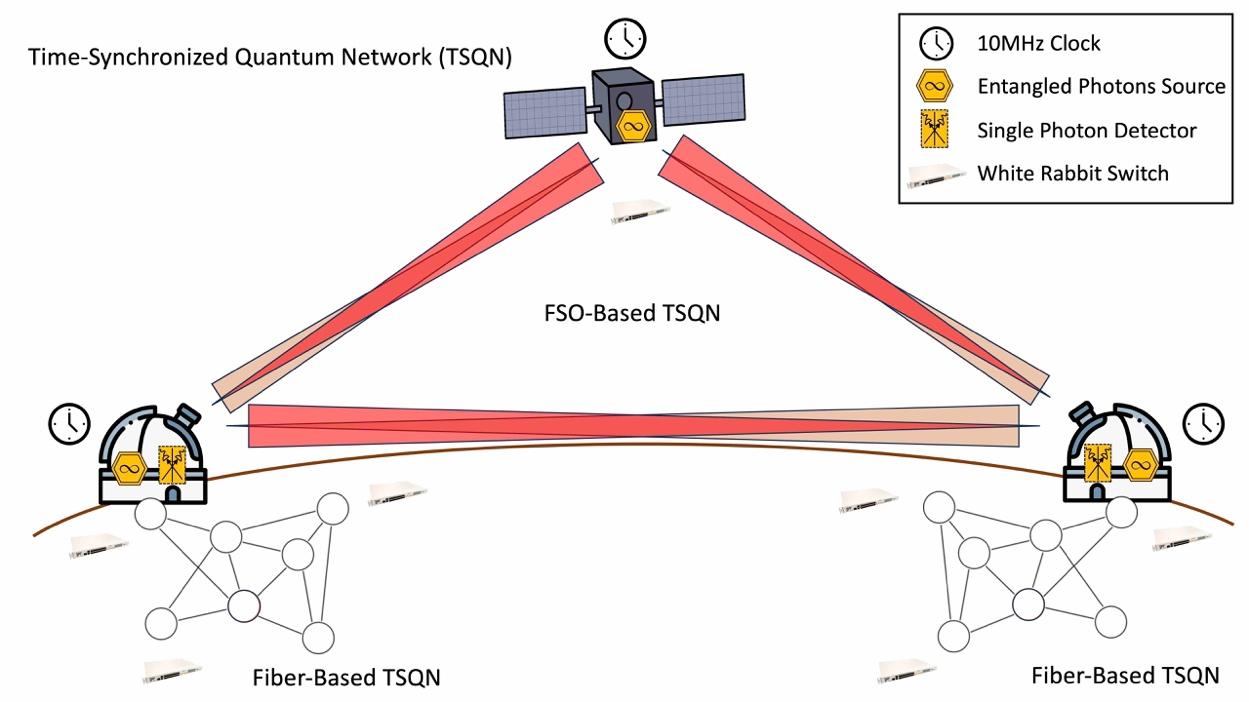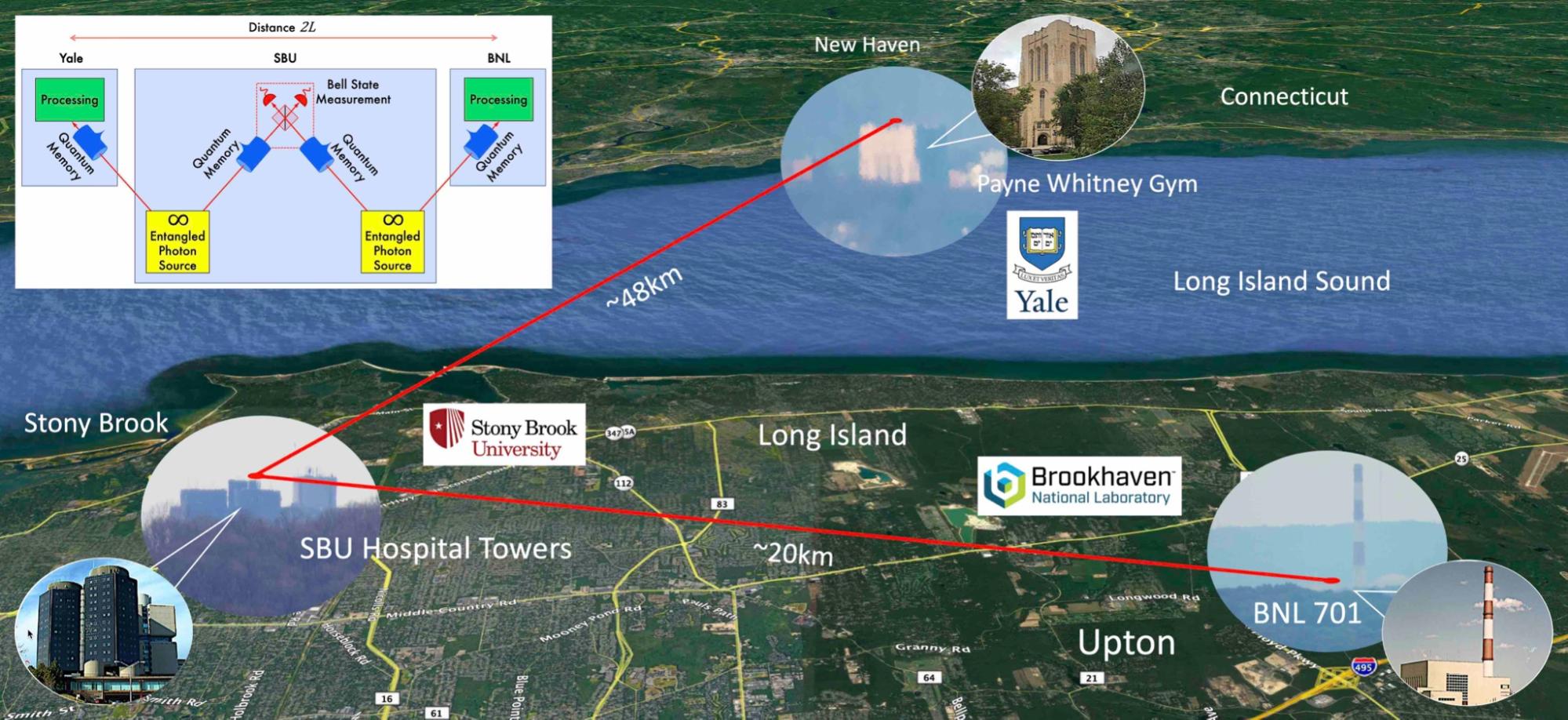Free-Space Optical (FSO) Quantum Communication Links
In the NYSQIT network, in addition to laying the optical fiber links connecting other nodes, we are currently creating wireless FSO links to connect SBU to Yale and Brookhaven.
In our ongoing project in collaboration with the Instrumentation Division of the Brookhaven National Laboratory, we have developed prototypes of FSO transmitter (TX) and a receiver (RX) for a 20km FSO quantum link between SBU and BNL, that will connect a single-photon source at BNL with a heralded memory at SBU. The SBU-BNL link will provide the foundation to develop a much longer (53km) SBU-Yale FSO link.

Vision of a future quantum internet, composed of fiber-based local quantum networks, free-space terrestrial links for inter-city quantum networking, and satellite communication for inter-continental connections. We propose to extend the time synchronization we currently use in our fiber-based quantum network testbed to free-space operations using two telescopes connecting BNL and SBU.
To maximize the compatibility with existing infrastructure, the SBU-Yale FSO link will use telecom O-band (1324nm) as the quantum channel, 1367nm channel for wavefront and polarization correction feedback, and 635nm channel for coarse alignment of the beam(s). The TX and RX will be installed on the rooftops of SBU Hospital and Yale's Whitney Gymnasium respectively. At the TX, the 1324nm and 1367nm beams are combined confocally to co-propagate through the atmosphere. After encoding the 1324nm light on the TX station with arbitrary polarization states, the combined beams will be expanded using aperture telescopes to minimize beam expansion due to diffraction; we'll use 250 mm aperture telescopes for the SBU-BNL and 1m for the SBU-Yale link. Dielectric optical coatings optimized for O-band should drastically improve transmission efficiency at wavelengths of 1324nm. At the RX, we will set up an adaptive optics system using a Wave Front Sensor feeding a piezoelectric 40-actuator deformable mirror with wavefront correction data, to correct for spatial-mode distortion caused by atmospheric effects.

Proposed free-space quantum network connecting NY and CT across the Long Island Sound. We will place the sender optics (Tx) at SBU and field two receiving stations (Rx) at Yale (Payne Whitney Gym) and BNL (Building 701). The receiving stations will have adaptive optics, fiber coupling units and stabilizations feedback loops. Dedicated fiber connections will bring the photons to QIS laboratories in the three locations where entangled photon sources and heralded quantum memories will be located. The SBU-BNL link is currently under development and will be a resource for this program by operating at new wavelengths. (Inset: concept of a quantum repeater hop).
State-of-the-art single- and dual-deformable mirror adaptive optics will be deployed at both TX and RX to correct the severe atmospheric turbulence over the 53km range; this will require a novel wavefront detection, dispersion compensation, and a tracking and pointing mechanisms. We will also include maritime atmosphere models to compensate for the variability on the extinction coefficient (which is dominated by scattering), as it varies greatly with humidity. For example, 70% humidity will yield an extinction coefficient of 0.1/km, which will mean a total loss of approximately 20dB over the 53km SBU-Yale link. This loss rate will be very similar to our current fiber-based quantum communication links.
To learn more, please see Justine Haupt's presentation:
